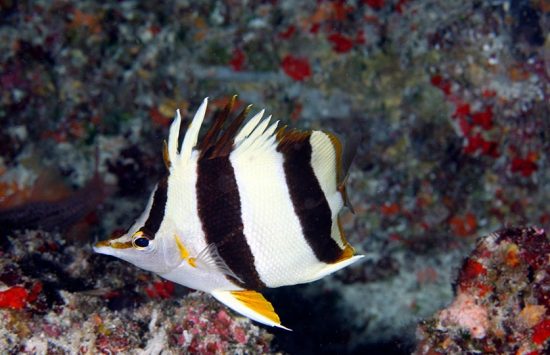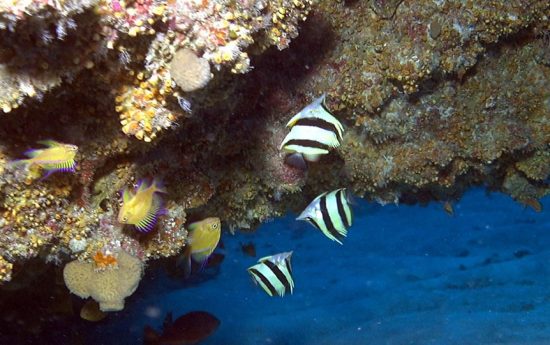



Butterflyfish found in deep coral reefs
Scientists have announced the discovery of a new species of
butterflyfish in the deep coral reefs of the Papahānaumokuākea Marine
National Monument, in the northwestern Hawaiian Islands.
A paper describing the species has been published in the latest issue of ZooKeys journal.
Named Pete Basabe’s Butterflyfish (Prognathodes basabei), the fish was
actually first recorded on video more than 20 years ago from manned
submersibles at depths of 600 feet.
Bishop Museum scientist Richard
Pyle and University of Hawaii marine biologist E. H. “Deetsie” Chave
acknowledged it as a potential new species then, but further
investigation at the time was impossible due to the extreme depth.
It was only after advanced CCR technology came into the picture that
specimens of the fish were collected and preserved, thereby
facilitating proper documentation.
Describing butterflyfish as
colourful, beautiful, and well-studied worldwide, lead author Pyle said
that “finding a new species of butterflyfish is a rare event.”
Veteran local diver Pete Basabe was given the honour of having the new
species named after him for his efforts in collecting reef fishes for
scientific research and educational displays. An experienced deep diver
from Kona, he was also instrumental in his support of the dives that
led to the collection of the first specimen of the new species.
At depths of 180 to 500 feet, deep coral reefs (where Pete Basabe’s
Butterflyfish are found) are the most poorly explored of all the marine
ecosystems. This is because they are deeper than where most scuba
divers would explore, yet shallower than where most submersibles are
designed to explore.
“Discoveries such as this underscore how poorly explored and how little
we know about our deep coral reefs. Virtually every deep dive we do
takes place on a reef that no human being has ever seen,” said Randall
Kosaki, NOAA scientist and the study’s co-author.
In June this year, a NOAA expedition led to the collection of live
specimens. These fish are now on display at Bishop Museum in Honolulu,
Mokupāpapa Discovery Center in Hilo and the Waikiki Aquarium.
The announcement of the new species comes less than two weeks after US
President Barack Obama announced the expansion of the Papahānaumokuākea
Marine National Monument from 139,797 to 582,578 square miles, making
it the largest marine park in the world.
Kosaki described the discovery as an illustration of the conservation
value of large marine protected areas, adding, “Not only do they
protect the biodiversity that we already know about, they also protect
the diversity we’ve yet to discover. And there's a lot left to
discover.”
 Mares
Mares 13th September 2016
13th September 2016 Papahanaumokuakea Marine National Monument
Papahanaumokuakea Marine National Monument